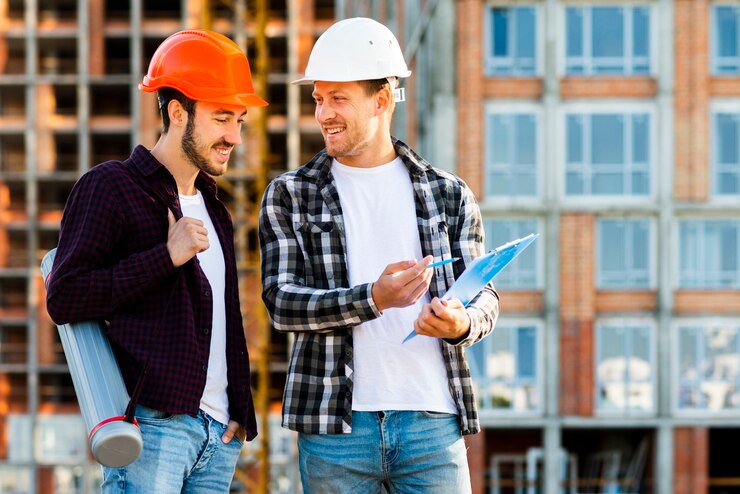How Constructability Reviews Save Time and Money on Your Project?

In construction, one small mistake can lead to big delays and added costs. Whether it’s a design flaw, the wrong materials, or unexpected issues at the worksite, these problems can quickly drain time and money. This is where a constructability review becomes incredibly valuable. A construction plan review checks a project’s plans before any construction starts, ensuring that the design makes sense, the materials are right, and the plan is realistic. Let’s explore what a constructability check is and how it can help a project stay on time and within budget.
What is a Constructability Review?
A constructability review is a careful check of the construction project’s plans before the actual work begins. During this review, experts examine the blueprints, designs, and schedules to make sure everything is well-planned, safe, and possible to build in real life.
The review team is often made up of construction managers, architects, engineers, and contractors. Their different areas of knowledge help them spot and fix issues early on, saving time, money, and hassle down the road.
6 Ways Constructability Reviews Save Time and Money
Constructability building reviews aren’t just another step in the process; they’re a smart way to avoid common problems in construction. Here are six specific ways they help save time and money on a project.
1. Reducing Last-Minute Changes
When something unexpected happens during construction, it often leads to a change order. This means adjustments are made to the original plan after construction has already started, which can cause delays and added costs.
A constructability review prevents change orders by catching possible issues before construction begins. Fewer change orders mean the project can move forward more smoothly, helping it stay on track and within budget.
2. Cutting Down on Material Waste
Materials can get wasted in construction for many reasons, like overordering or making mistakes with measurements. A thorough plan check helps the project team use materials efficiently.
The review team might suggest using different materials that are cheaper or easier to work with. They might also recommend ways to make better use of the materials on hand. This means the project can save money and reduce waste, which is better for the environment, too.
3. Keeping the Worksite Safe
Safety is a huge priority in construction. Complicated designs or risky building methods can sometimes lead to accidents. By doing a constructability review, the team can spot any potential safety issues in the design and make adjustments before anyone steps on-site.
For example, if a design has narrow walkways or tricky angles, these details can be fixed to make it safer to work. Fewer accidents mean fewer delays, and everyone can work with peace of mind.
4. Making the Schedule More Realistic
Construction delays can be very expensive. They increase costs for labor, machinery, and even equipment rentals. A construction plan review makes the project timeline more accurate by spotting possible problems that could slow things down.
Experts might look at weather conditions, the availability of materials, or the number of workers needed for each stage. With this information, they can set a timeline that’s realistic, helping keep the project on track.
5. Improving Communication Among Team Members
A lot of issues in construction projects happen because of misunderstandings or lack of communication. A constructability review brings together everyone involved—architects, engineers, contractors, and construction managers—before construction starts.
By working together early on, they can make sure everyone understands the plan and knows their role. This teamwork continues throughout the project, so any issues can be fixed quickly without wasting time or money.
6. Making the Design More Practical and Easier to Build
Sometimes a design might look fantastic on paper but end up being difficult or expensive to build. Plan reviews help simplify designs in a way that still meets the project goals but is easier and cheaper to construct.
For instance, if a building design has unique shapes or needs rare materials, the review team might suggest simpler options that are just as effective but easier to build. These adjustments help reduce construction time and make the project more cost-effective.
Steps Involved in a Constructability Review
To fully understand the benefits, it’s helpful to know what goes into a typical constructability review process. Here are the main steps:
- Initial Review of Plans and Documents: The team begins by reviewing all project plans, specifications, and other documents to get a comprehensive understanding of the project.
- Assessment of Construction Techniques: Experts assess the feasibility of construction methods outlined in the design and suggest alternatives if necessary.
- Identification of Potential Challenges: The team identifies potential roadblocks, including environmental factors, supply chain issues, or safety concerns.
- Analysis of Material Requirements: Materials are evaluated for availability, cost-effectiveness, and suitability to the project’s design and requirements.
- Scheduling Review: The timeline is examined, considering factors that could affect progress, such as weather or labor availability.
- Final Recommendations and Adjustments: The team provides a list of recommendations for design adjustments, construction methods, and scheduling changes to optimize efficiency and cost-effectiveness.
Why Every Project Should Have a Construction Plan Check
Construction plan checks are essential for all kinds of projects, whether large or small. By catching potential issues early on, these reviews help a project run smoothly, saving both time and money. They make it easier to stick to the budget, improve safety, and keep the schedule realistic. For project managers, developers, and builders, a constructability review is an investment that prevents surprises down the road.
Summary
A constructability review may sound like an additional step in an already complex process, but it’s an investment in efficiency and risk reduction. With fewer delays, reduced material waste, improved safety, and better scheduling, these reviews can transform a project’s outcome, making it more predictable and profitable. When embarking on a construction project, consider the benefits of a constructability review. It’s a proactive approach that ensures your project isn’t just built to design but built to succeed—on time, on budget, and with fewer hurdles along the way.













Post Comment